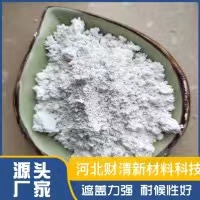
Dec . 31, 2024 13:27 Back to list
Exploring the Uses and Benefits of Lithopone in Pigment Manufacturing
The Role of Lithopone in Pigment Manufacturing
Lithopone is a fascinating compound that has been a staple in the pigment manufacturing industry for decades. Composed primarily of zinc sulfide (ZnS) and barium sulfate (BaSO4), lithopone is prized for its unique properties, making it an ideal choice for various applications, including paints, plastics, and coatings. As manufacturers strive for innovative and sustainable solutions, understanding the role of lithopone in pigment production is crucial.
Historical Background
Lithopone was first developed in the late 19th century, emerging as a viable alternative to existing white pigments like lead white and zinc white. It quickly gained popularity due to its excellent opacity, brilliant whiteness, and non-toxic nature. Manufacturers initially utilized lithopone in oil paints, but its versatility soon led to broader applications across diverse industries.
Properties of Lithopone
One of the key characteristics of lithopone is its remarkable opacity. Lithopone can provide excellent hiding power, which is vital for formulations in which coverage is critical. Furthermore, lithopone is known for its durability and resistance to weathering, making it an ideal choice for outdoor applications where the pigment faces harsh environmental conditions.
Another important attribute of lithopone is its ability to blend well with other pigments, enhancing color stability and performance. This versatility enables pigment manufacturers to create unique color formulations that meet specific customer demands. Additionally, lithopone exhibits good thermal stability, making it suitable for applications that require exposure to heat, such as in plastics and coatings.
Applications in Various Industries
The primary use of lithopone lies in the paint and coatings industry, where it serves as a white pigment. The ability of lithopone to provide excellent opacity makes it a preferred choice for manufacturers looking to produce high-quality paints. This is particularly relevant in industrial coatings, where durability and resistance to environmental factors are essential.
Moreover, lithopone finds application in the plastics industry, where it is used to enhance the aesthetic appeal of plastic products. Its compatibility with various polymer matrices allows for seamless integration, ensuring that the resultant product maintains both visual and structural integrity.
lithopone in pigment manufacturers

In the paper industry, lithopone has been used as a filler and a coating agent. Its ability to improve brightness, opacity, and printability makes it a valuable component in producing high-quality paper products. Additionally, lithopone is utilized in rubber and textiles, where it provides color and performance enhancement.
Environmental Considerations
As manufacturers increasingly focus on sustainability, lithopone stands out as an environmentally friendly option. Unlike many conventional pigments that contain toxic heavy metals, lithopone is non-toxic and poses minimal risk to human health and the environment. This makes it particularly appealing to manufacturers striving to adhere to stricter environmental regulations.
The production of lithopone involves processes that are generally safer and less harmful than those associated with other pigments. Furthermore, as a naturally derived mineral compound, lithopone reinforces the growing trend toward using sustainable materials in the pigment industry.
Future Trends
The pigment manufacturing industry is constantly evolving, influenced by trends such as increased demand for eco-friendly products and innovations in production techniques. The role of lithopone is likely to expand in response to these changes. As manufacturers explore new formulations to enhance the performance and sustainability of their products, lithopone presents significant opportunities for innovation.
Additionally, ongoing research into modifying and optimizing lithopone's properties could result in even more advanced pigment solutions. For example, efforts to improve its dispersibility or enhance its compatibility with alternative binders and additives may significantly impact the applications of lithopone in various industries.
Conclusion
In summary, lithopone remains a crucial player in the pigment manufacturing arena. Its unique properties, broad range of applications, and environmentally friendly profile make it a favorable choice for manufacturers looking to create high-quality, sustainable products. As the industry continues to adapt to new challenges and demands, lithopone is poised to retain its relevance and importance in the coming years, highlighting its enduring legacy in the world of pigments.
-
What is Barium Sulfate Board? Uses, Benefits & Industry Insights
NewsNov.25,2025
-
Essential Guide to Calcium Powder Quotes – Pricing, Quality & Global Insights
NewsNov.24,2025
-
Reliable Anatase TiO2 Pigment Quotes for Sustainable Industry Use | CQ Titanium Dioxide
NewsNov.24,2025
-
Understanding Lithopone B311 Powder Quotes – Market Insights & Applications
NewsNov.23,2025
-
Reliable 30-50nm TiO2 Powders Quotes for Advanced Industrial Use | CQTitanium
NewsNov.23,2025
-
Comprehensive Guide on Lithopone Red Pigments Quotes | Industry Insights & Pricing
NewsNov.22,2025
